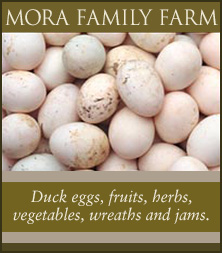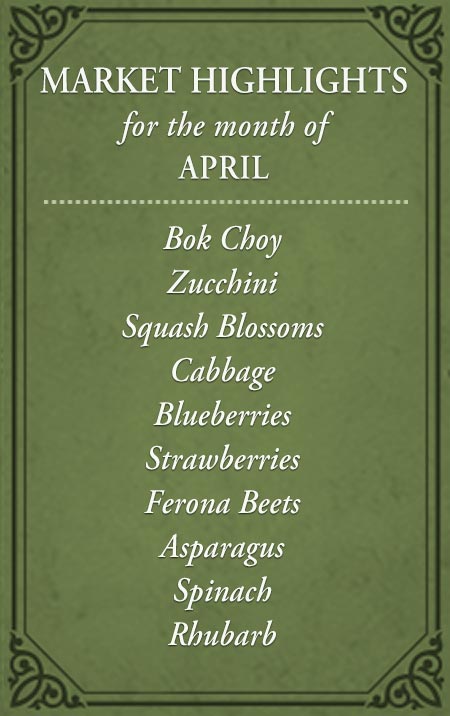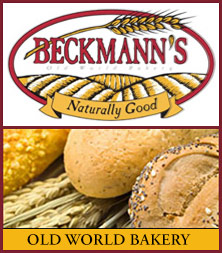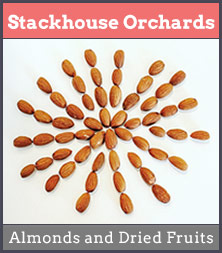This recipe is simple to make but takes 2-3 days of curing for optimum results. Prep takes about 30 minutes at the most, and to cook you just put it in a low-temperature oven. Although you could do this without the long cure and just rub the seasonings and cure mix on an hour ahead, the results after a long cure are truly worth the wait. The long cure and the slow oven helps firm up the fat and to avoid excess melting.
As this dish is quite rich, I usually serve it with something that has a touch of bitterness to it such as a sauté of greens or broccolini, or something with a little vinegar in it like a dish of lentils or pickles. While this recipe itself is long, the time needed to execute the dish is not, and is quite simple. Once done, this is a snap to do again.
INGREDIENTS:
1½-1¾ pound piece pork belly
Cure Base
2 tablespoons sugar
1 tablespoon Kosher salt
Seasonings
1½ tablespoons ground coriander seed
1 tablespoon dried marjoram
½ tablespoon each of dried thyme, oregano, and rosemary
1 teaspoon culinary lavender
Fresh ground pepper to taste-enough to cover the entire piece of pork
Optional: Herbes de Provence, enough to liberally coat the entire pork belly
Special Equipment
An ovenproof dish with a rack that is large enough to hold the pork belly
A zipper-top plastic bag large enough to hold the pork
METHOD:
To Cure:
Look at the pork belly. You will see that one surface has more fat than the other. We’ll call the fattier side the top, the other is the bottom. Working on a plate or dish to catch any cure or seasonings, that way you can use what falls off.
Put the cure in one small dish, and the seasonings all together into another, and have them close by.
Using a thin-bladed, very sharp knife, make a series of diagonal cuts in the fat, just going in 1/8th to 3/16ths of an inch. Make the same type of cuts going in the opposite direction. You should have a nice tight diamond pattern covering the entire top of the pork. These cuts allow the cure to penetrate the fat more readily.
Pick up the pork with one hand from an end so the pork angles down and the cuts gape open a little. Use your other hand to pinch up some of the cure and sprinkle liberally over the pork, trying to get the cure into the cuts. After the top is done, cover the rest of the pork with cure, being sure to use what falls onto the plate. Once the cure base is applied, go ahead and liberally season the pork with the herbs and spices, using your fingers to gently push the seasonings into the meat.
Transfer the meat to the plastic bag and sprinkle the remaining cure and seasonings from the place over the top of the meat. Get as much air out of the bag as you can and seal it. Place it in the coldest part of the refrigerator, top up, and forget about it for two to three days.
To Cook:
Pre-heat oven to 300°F.
Get your roasting pan out and fit it with the rack. Put enough cold water into the bottom of the roasting pan to come close to, but not touching, the rack. You do not want the water to wash off the seasonings. The water is necessary for 3 reasons:
- Absorbs dripping fat and keeps it from smoking and burning, giving the pork belly and unpleasant flavor
- Makes cleaning the pan a lot easier
- Saves the rendered pork fat! Place the water and pork drippings/fat in a tub and place in the refrigerator. Skim off the rendered fat once it hardens. This flavorful fat can be used to cook in conjunction with oil or butter and will add nice flavor to things like potatoes or greens. Use rendered pork fat like Southern cooks use bacon fat for gravies.
Place the pork belly on the rack, being sure the top is up, and place it in the center of the oven to cook.
Cook for one hour. After one hour, check to see that the meat is not cooking too fast. It should be gently browning, with beads of fat forming on the outside, and should be making a light hissing/sizzling sound. If it seems to be dripping fat at a vigorous rate and is hissing loudly, turn down the heat to 275°F. The idea is to gently brown the pork while avoiding a lot of shrinkage which results from the fat cooking too fast and dripping out. Return the pork to the oven, rotating the pan 180°.
Cook another hour. The pork should be coloring nicely now, a golden brown, and the herbs should form a nice crust. Pinch the sides of the pork gently with thumb and forefinger-the pork should feel as if it is still soft, but beginning to firm up. Return it to the oven after rotating the pan 180°.
Cook for a half hour more. Check to see how it is doing. Remember, every oven is a little different, so there may be some variations in timing. The pork could be done at this point-the are several ways to check. Pinch the pork side to side, does it feel firm? It is probably done. You can also stab the center of the pork with a thin-bladed knife or skewer and let it sit a moment, and then (carefully!) touch it to your lower lip. If the blade is hot, the inside of the meat is probably hot too, indicating doneness. You can also use a quick read thermometer to ascertain that the pork has reached 138°F –a magic number for pork. The easiest method would be to slice off the end and look, and taste. You want the meat to be evenly colored- a light tan, without pink, and the fat should be an even pearl white with translucence. Check that it is fairly firm, not liquid seeming or gelatinous. If this is the state of the pork belly, it is done.
In all likelihood, you will need to cook the pork for another half to a full hour. Continue checking as above until the pork is done. If the pork is done inside but not very brown, turn up the heat to 350°F and cook just long enough to brown the outside.
When done, remove the pork to a cutting board and allow it to rest five minutes so the meat firms up a little. Cut across the length into half-inch slices and serve.
YIELD: Serves 4
CHEF’S NOTES:
This recipe is long because I felt it was necessary to eliminate as much room for error as possible. With this dish, err on the side of caution. You can always cook it longer at a low temperature, and then you will know how long it takes the next time. If you cook this too hot, it will melt and shrink and you would be disappointed. As this dish is so good, I want it to turn out well. If you do this once, you will see it is easy and will make it your own.
If you want to cook it quicker, you can use a sharp thin-bladed knife to cut the pork into lengthwise slices, about a 1/2 inch thick. Then cook these as you would the whole piece. This should take about an hour, maybe less. You can play with the temperatures to see how fast you can cook it without a lot of shrinkage. You could also try pan-frying the slices over medium-low heat in a heavy skillet. Be careful not to let the pan get too hot, and pour out the rendered fat if a lot accumulates to avoid rapid melting.
This pork is good used as a base for beans and green as you would bacon. It would be nice to cut into batons and add to a salad of greens that are sharp such as arugula and escarole. I also like to serve it with very sharp mustard.



























